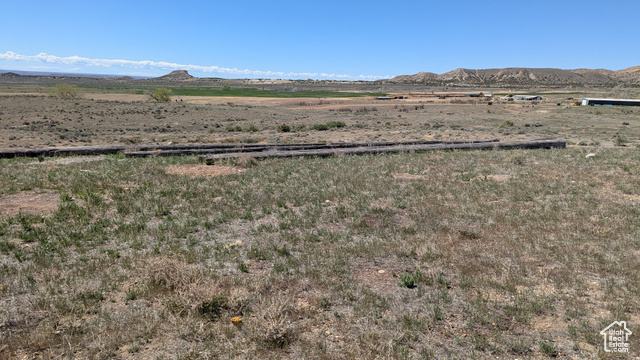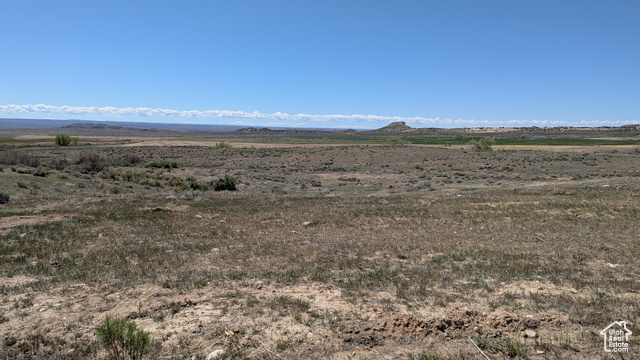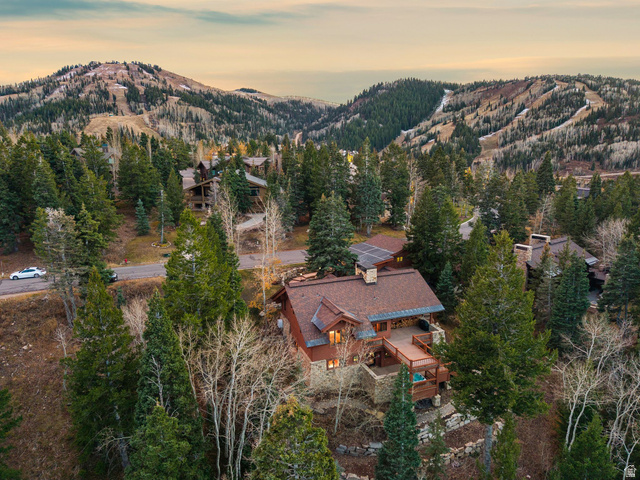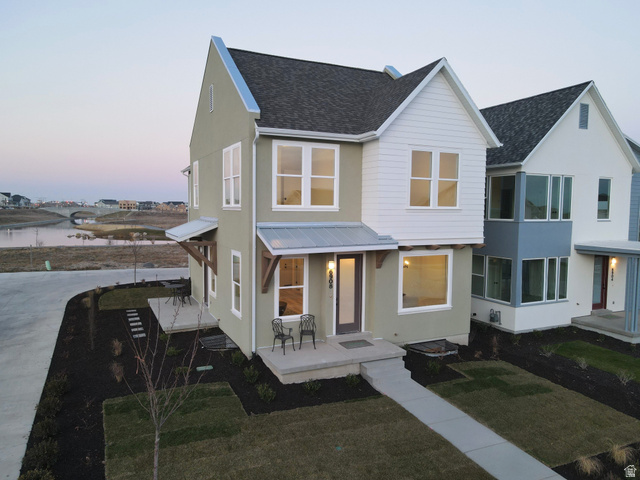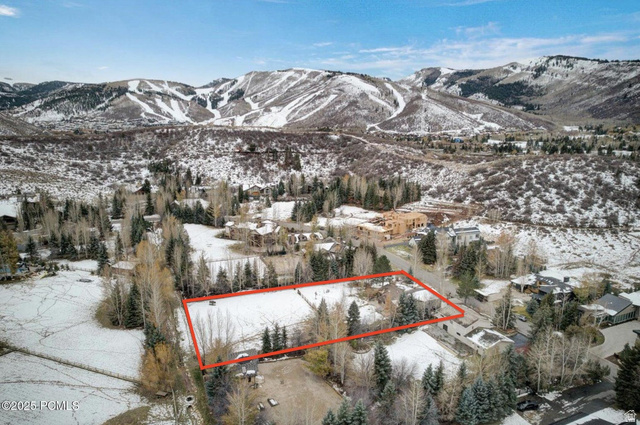Buying new construction in Utah offers modern layouts, energy-efficient systems, and neighborhoods built for today's lifestyles. However, the polished model homes and slick sales centers can hide recurring pitfalls that add thousands of dollars and months of stress.

Uncertainty around housing headlines can make buying a home feel like navigating a storm. No one knows exactly how prices or mortgage rates will move next year or the year after, so successful buyers focus on controllable steps: careful research, sound financing, and a long-term plan tuned to local Utah market dynamics. The guidance below outlines a practical, methodical approach that emphasizes patience, financial resilience, and smart use of new-construction incentives common across Utah communities.
1. Start Slowly: Learn the Local Market and Neighborhoods
Rushing into an offer because of media noise or fear of missing out often leads to buyer remorse. Market conditions in Utah vary widely by city and neighborhood. Salt Lake City, Park City, St. George, and growing suburbs each behave differently when it comes to inventory, typical time on market, and price trends. Take time to evaluate commute times, nearby amenities, school rankings, and the proportion of homes for sale versus demand in the immediate neighborhood. Local school performance and future development plans can materially affect long-term resale value even if the buyer does not have school-aged children today.
Practical steps include tracking recent sale prices on comparable homes, monitoring how long listings stay active, and understanding seasonal patterns in the chosen city. For Utah-specific insights and neighborhood-level data, see resources such as the Utah housing market and city pages covering Salt Lake City and St. George.
2. Get Financial Clarity Before Touring Homes
Before viewing properties, obtain a loan preapproval from a loan officer to determine a realistic maximum purchase price and to estimate monthly housing payments and closing costs. Preapproval numbers are a tool for narrowing the search and avoiding the emotional trap of considering homes outside the buyer's comfort zone. Lenders may qualify applicants for amounts that feel uncomfortable when translated into monthly payments, so buyers should compare the lender’s number against a payment that fits a conservative household budget.
Maintain an emergency fund equal to three to six months of living expenses and plan for occasional large costs such as roof replacement or major systems repairs. Even in Utah’s most stable neighborhoods, deferred maintenance on older homes can create immediate cash needs; new construction often reduces near-term maintenance risk but can bring other recurring costs.
3. Give New Construction Serious Consideration
New construction is an attractive option in many Utah markets. Builders often present incentives that materially lower out-of-pocket costs. Typical builder offerings include closing cost credits, mortgage rate buydowns, and upgrade allowances. In some cases incentives can cover closing costs entirely or be used to reduce the effective interest rate on a fixed mortgage, lowering monthly payments compared with comparable resale homes.
Builder warranties add another benefit. New homes commonly include multi-year protections on structural elements and major systems, reducing the risk of surprise expenses in the early years of ownership. These protections differ from one-year home warranties that may be offered on resale homes and can be especially valuable in regions where reroofing, HVAC replacement, or foundation work are costly.
Buyers should balance incentives against other cost differences. New homes in Utah may come with higher initial assessed values and different tax or fee structures compared with older neighborhoods. A thoughtful comparison between a new build and a well-priced existing home should include projected property taxes, homeowners association fees, utility costs, and a reasonable estimate for eventual maintenance on an older property.
4. Representation When Dealing with Builders
Representation matters when purchasing new construction. Buyers should confirm how representation works at the community sales office and register their agent at first contact if they want independent representation. In some jurisdictions and builder setups, the onsite sales representative acts as the builder’s agent; buyers who visit the sales office without registering an agent may find they cannot later switch to independent representation for that community. Confirm local practices and registration policies before touring model homes.
5. Ignore the Doom-and-Gloom Noise; Focus on Goals
Headlines often emphasize dramatic scenarios because negativity attracts attention. Rather than reacting to sensational predictions, buyers should identify what matters most for household stability and quality of life. Will the home be occupied for seven to ten years or longer? Is the neighborhood a lifestyle fit for current and future needs? Long-term ownership horizons smooth out short-term market volatility; buyers planning to stay seven years or more are less affected by temporary price swings or rate movements.
6. Prioritize Location and Long-Term Fit
Remodels can improve a home, but location cannot be changed. Prioritize proximity to work, amenities, transit, parks, and reputable schools. Consider future neighborhood developments that might affect traffic patterns, noise, or property values. Utah’s rapid growth makes monitoring municipal plans for roads, master-planned communities, and commercial corridors an important part of due diligence.
7. Budget Conservatively and Avoid Overstretching
Preapproval figures are not a mandate to spend to the maximum. Buyers should determine a monthly mortgage payment that is sustainable even under stress scenarios such as job change or temporary income loss. Include an emergency fund and factor in ongoing homeownership costs such as property taxes, insurance, HOA fees, utilities, and maintenance. The goal is to buy within means so unforeseen expenses do not force a sale or financial hardship.
A Practical Checklist for Utah Buyers
- Preapproval before showings — know the realistic max purchase price and monthly payment.
- Neighborhood due diligence — commute times, schools, future development, resale patterns.
- Compare new vs resale — incentives, warranties, property tax differences, and maintenance expectations.
- Confirm agent representation rules at any builder sales office before visiting.
- Plan for long-term ownership — assume a seven to ten year horizon for better risk mitigation.
Further Reading and Utah Resources
For buyers who want Utah-specific guidance, related resources include pages covering new construction in Utah, first-time buyer steps, and how to compare new construction versus fixer-uppers. Examples include articles titled "Buying New Construction Homes in Utah in 2025," "Essential Steps for First-Time Home Buyers in Utah," and "How to Decide Between New Construction vs Fixer Upper Homes" which are available on local Utah real estate sites and municipal market reports. For community-level market reports, explore coverage of Salt Lake City and St. George markets and master-planned developments like Desert Color in the St. George area.
Connect with Local Expertise
Buyers who want an introduction to Utah real estate teams can visit the main Utah resource at https://bestutahrealestate.com for local market contacts, listings, and city guides.
Authoritative References
For high-authority data and broader market context, consult government and industry sources such as utah.gov and nar.realtor for statewide reports and national housing trends.
Related Utah Articles to Explore
- Buying New Construction Homes in Utah in 2025 (search site for this title)
- Essential Steps for First-Time Home Buyers in Utah (search site for this title)
- How to Decide Between New Construction vs Fixer Upper Homes (search site for this title)
- St. George Real Estate Market Reports and local city pages for neighborhood-level data
Frequently Asked Questions
Should buyers wait for a housing market crash before buying in Utah?
Timing a market crash is uncertain. Buyers with a long-term ownership horizon and stable finances benefit more from picking the right home and neighborhood rather than attempting to time short-term price movements. If a buyer needs to move within a few years or lacks an emergency fund, waiting may be prudent.
Are builder incentives common in Utah and worth using?
Builder incentives such as closing cost credits, rate buydowns, and upgrade allowances are common in many Utah markets where new inventory is available. These incentives can lower initial out-of-pocket costs and monthly payments, but buyers should compare total cost of ownership including taxes and potential HOAs.
Do new homes always cost less to maintain?
New homes typically have lower maintenance needs in the first several years and often include warranties that cover major systems. However, higher assessed values and different tax treatments can offset those savings. Evaluate long-term maintenance projections alongside tax and insurance estimates.
Is independent agent representation possible at builder sales offices in Utah?
Practices vary by builder and jurisdiction. Some sales offices require homebuyers to register with the onsite representative unless an agent is registered at first contact. Confirm representation rules before visiting model homes and register an agent immediately if independent representation is desired.
How long should a buyer plan to own a home to avoid short-term market risk?
A seven to ten year ownership horizon is a commonly recommended timeframe to ride out typical market cycles. Longer horizons reduce sensitivity to short-term fluctuations and increase the likelihood that price appreciation and mortgage amortization build meaningful equity.

